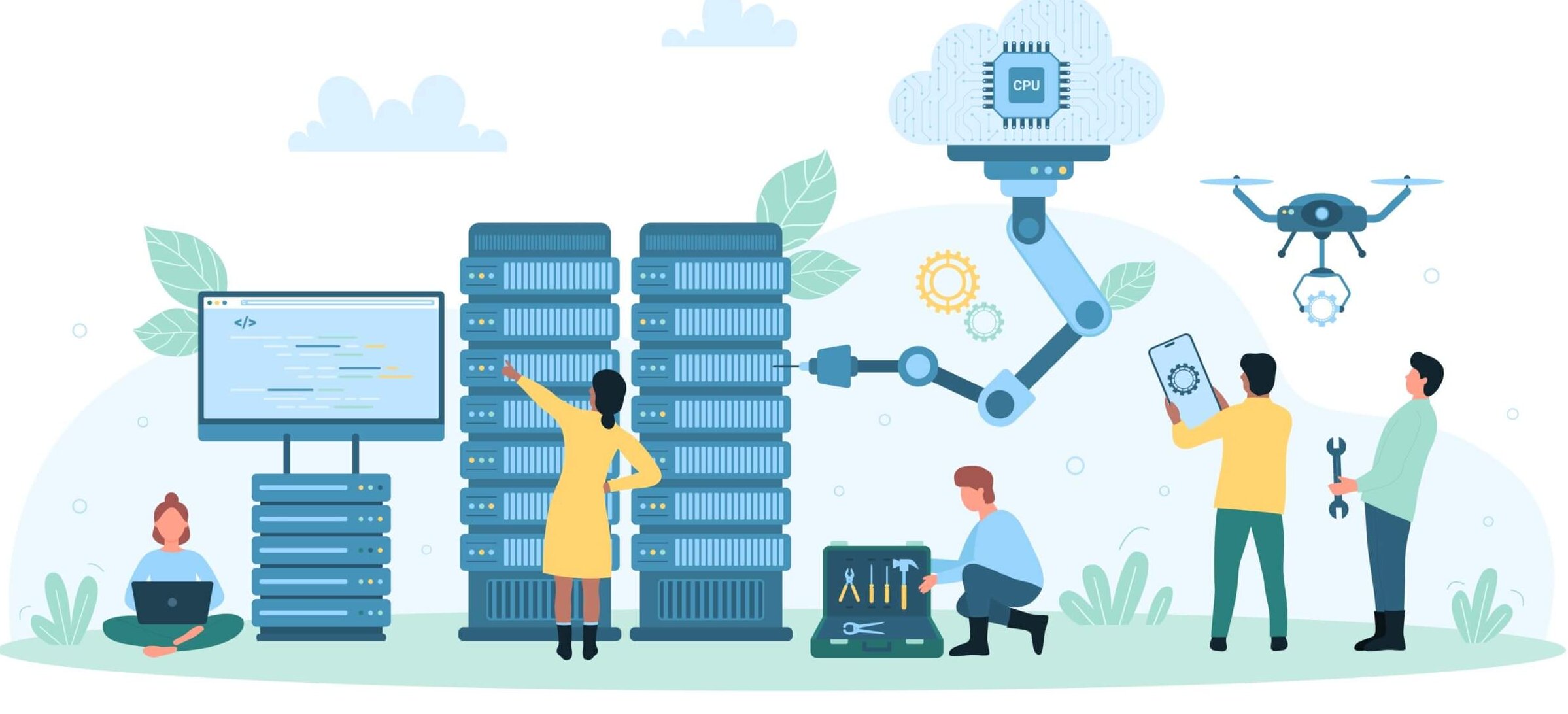Healthcare organizations are increasingly leading the charge in technology adoption, rapidly deploying advanced applications and digital tools to improve patient outcomes and operational efficiency. However, this acceleration is placing unprecedented pressure on existing IT infrastructure. Teams are being asked to support next-generation workloads, such as AI-powered diagnostics and real-time data platforms, on legacy systems, often without the benefit of increased budget or headcount.
At the same time, healthcare IT leaders face a well-documented skills gap, particularly in areas like container orchestration, Kubernetes, and infrastructure as code. This makes it difficult to operationalize new technologies at scale without introducing fragility or increasing manual overhead. The need to do more with less is further compounded by budget realignment. While investments in AI and modernization initiatives are increasing, they’re often being funded by reductions in traditional infrastructure spend.
In this environment, true end-to-end observability is a critical enabler of high-performing, resilient hybrid environments. It bridges operational gaps by automating root cause analysis (RCA), surfacing actionable insights, and driving intelligent resource optimization that empowers teams to support innovation without sacrificing system stability or exceeding budget constraints. With deep, real-time visibility across complex infrastructures, observability allows IT leaders to proactively improve performance, control costs, and reduce risk as they modernize their environments.
The Challenges of Modern Healthcare IT Infrastructure
Many healthcare organizations operate under a patchwork of legacy systems, third-party applications, and cloud-based solutions. While digital transformation has driven advancements in patient care, it has also introduced new layers of complexity. IT teams must navigate several key challenges:
- Fragmented Systems: Data flows across multiple platforms, making it difficult to track performance issues.
- High Volumes of Data: Healthcare generates massive amounts of data daily, requiring advanced analytics to detect trends and anomalies.
- Minimal Room for Downtime: Any system failure can disrupt clinical workflows and impact patient care.
- Limited IT Resources: Many healthcare IT teams are stretched thin, making automation and intelligent monitoring essential.
Without proper observability, IT teams are often stuck in reactive mode—addressing problems only after they’ve impacted users. This leads to prolonged downtime, frustrated clinicians, and increased operational costs.
How Observability Transforms IT Operations
Observability goes beyond traditional monitoring by providing real-time, end-to-end visibility across an entire IT ecosystem. This includes:
- Infrastructure Monitoring: Tracks performance across on-prem, cloud, and hybrid environments.
- Network Observability: Detects network slowdowns or failures that could impact critical healthcare services.
- Automated Root Cause Analysis: Reduces the time IT teams spend troubleshooting issues by instantly identifying the source of problems.
- Predictive Analytics: Uses machine learning to forecast potential issues before they occur.
Implementing a strong observability strategy allows IT teams to move from reactive firefighting to proactive problem-solving. This means fewer late-night calls about system failures and more time spent on strategic initiatives that enhance healthcare IT.
Real-World Impact: A Case Study in Healthcare Observability
One leading healthcare provider on the West Coast has leveraged observability technology for nearly a decade—and the results speak for themselves. Since deploying an observability-driven approach, they have not experienced a single major outage in over nine years.
Before implementing an observability platform, the IT team struggled with frequent slowdowns in their EHR system, impacting physicians’ ability to retrieve patient records. Diagnosing the root cause of these issues took days, sometimes weeks, due to the sheer complexity of their hybrid infrastructure.
With full-stack observability in place, the IT team can now:
- Identify performance bottlenecks instantly.
- Pinpoint slow database queries or misconfigured storage resources.
- Proactively address capacity issues before they cause downtime.
- Automate anomaly detection, reducing alert fatigue and manual troubleshooting.
The result? Clinicians experience fewer disruptions, patients receive timely care, and the IT team can operate with confidence, knowing they have the visibility needed to maintain system reliability.
Key Components of a Robust Healthcare Observability Strategy
To achieve the full benefits of observability, IT teams should focus on these core components:
- End-to-End Visibility: Verify that all critical applications, infrastructure components, and network pathways are continuously monitored.
- Real-Time Alerts and Insights: Use AI-driven analytics to detect anomalies before they escalate into service disruptions.
- Intelligent Data Correlation: Connect data points across the IT ecosystem to gain a holistic understanding of system health.
- Automation and Self-Healing Capabilities: Reduce the manual workload on IT staff by enabling automated responses to common performance issues.
- Scalability: Ensure observability solutions can grow with your organization, supporting new applications, devices, and cloud environments.
Making Healthcare IT Teams More Efficient
Beyond improving system performance, observability also enhances IT team efficiency in several ways:
- Reduces Mean Time to Resolution (MTTR): By quickly identifying the root cause of issues, IT teams spend less time troubleshooting and more time on strategic projects.
- Minimizes Alert Fatigue: Traditional monitoring tools often generate excessive alerts, many of which are false positives. Observability solutions filter out noise and prioritize actionable insights.
- Improves Collaboration: When IT teams have a single source of truth for system health, they can collaborate more effectively across different departments.
- Supports IT Automation: Observability platforms can integrate with automation tools to trigger self-healing workflows, reducing the need for manual intervention.
Looking Ahead: The Future of Observability in Healthcare
As healthcare IT ecosystems continue to evolve, observability will play an increasingly critical role in enabling stability, efficiency, and innovation. Emerging trends include:
AI-Driven Insights: Machine learning will further enhance observability tools, providing even more accurate predictions and automated responses.
Deeper Integration with Cloud Services: As more healthcare organizations embrace hybrid and multi-cloud environments, observability solutions will need to provide seamless visibility across these landscapes.
Expanded Use of Digital Twins: Some healthcare providers are experimenting with digital twins—virtual replicas of their IT environments—to simulate system changes and prevent potential failures before they occur.
What This Means for You
Deep hybrid infrastructure observability is critical to empowering IT teams to operate highly resilient and optimized estates. With the increasing complexity of IT environments, enabling continuous uptime, optimal performance, and operational efficiency is a significant challenge. However, by adopting an observability-driven approach, healthcare organizations can:
- Proactively detect and resolve IT issues before they impact patient care.
- Improve system performance and reduce costly downtime.
- Enhance IT team efficiency through automation and intelligent insights.
For healthcare IT leaders, investing in observability today is an investment in the future stability and reliability of your organization. The right observability platform provides the insights and automation needed to navigate the complexities of modern healthcare IT, creating seamless experiences for clinicians and better outcomes for patients.
Want to learn more about how observability can transform your healthcare IT operations? Schedule a demo today and see the difference firsthand.
Additional Resources
Cloud-based Healthcare IT Solution Company Case Study
West Coast Healthcare Provider Case Study
Leading Healthcare System Case Study

Amit Rathi
VP of Engineering, Virtana




